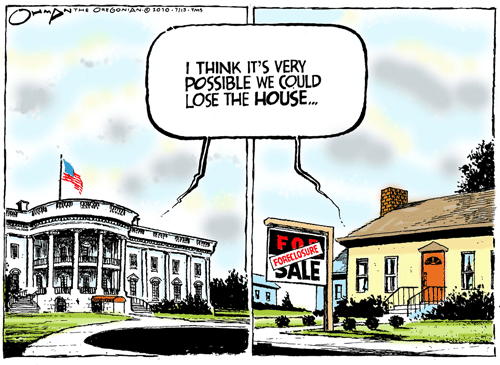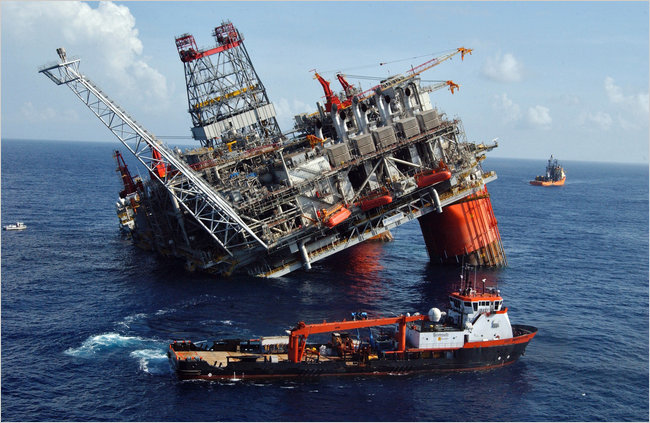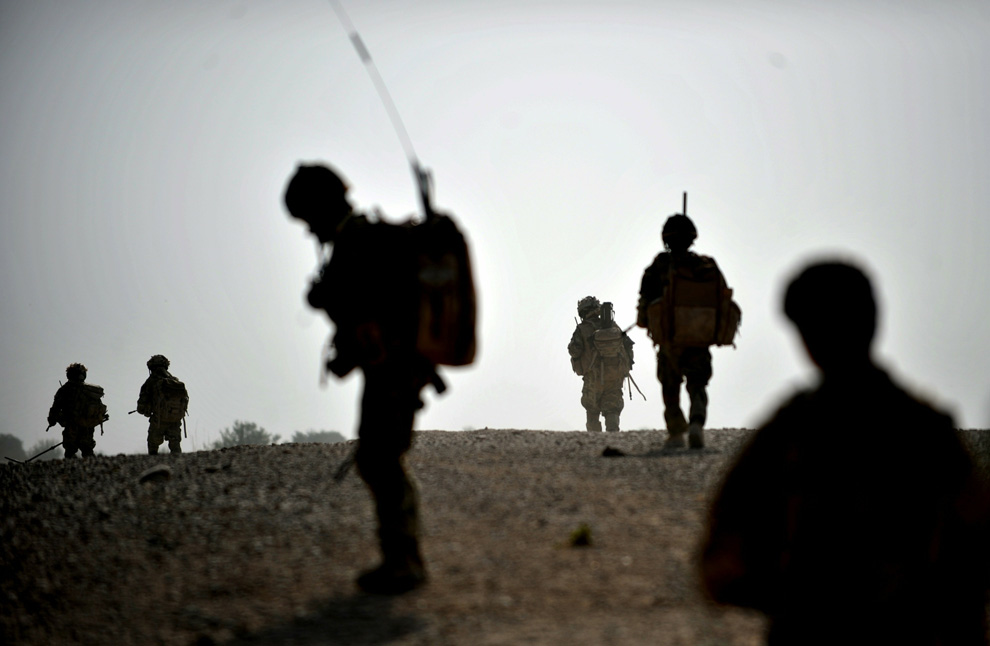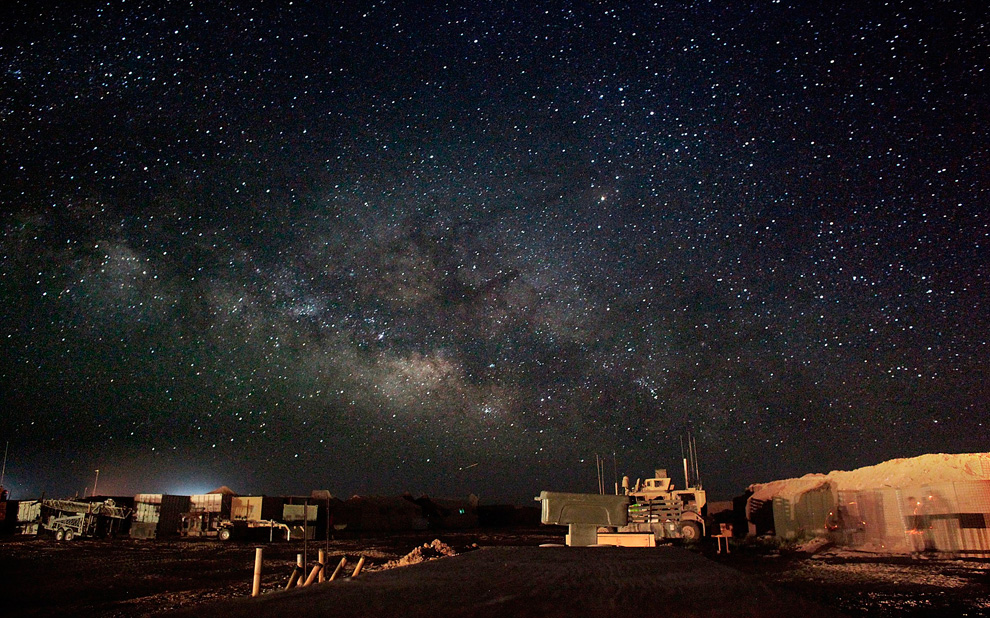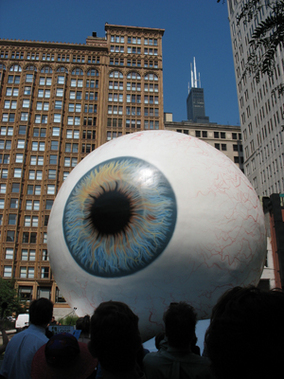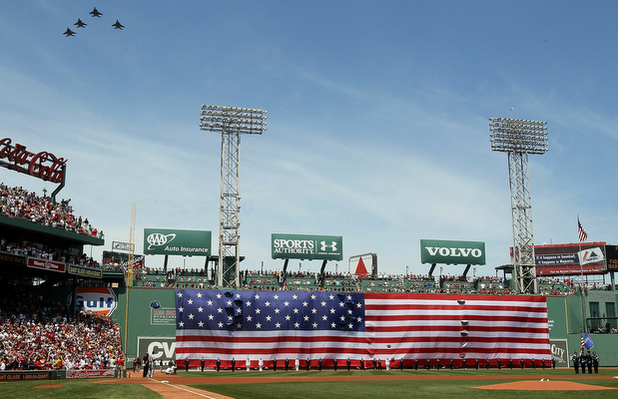Let’s start with the obvious: who can name the movie?

It’s a trick question, of course. This fabulous sci-fi machine looming monstrously out of smoke and flame isn’t from a movie set. It’s the Deepwater Horizon oil platform in its death throes on April 22, 2010, two days after the explosion that started one of the worst environmental disasters in US history. Life seems to be following art as this tragedy mimes an image and mood easily conjured out of popular culture, and not for the first time–recall how many people remarked that the planes exploding into the World Trade Center seemed to be a film rather than an actual historical event in real time.
Nor has this uncanny experience happened for the last time. And the story that accompanied this photograph in the New York Times is one reason why we will continue to experience large-scale disasters. To see why, we can begin by noting that photo had two captions: One was the small credit off to one side that said “Catastrophe” and then provided the literal details of what, where, and when. The other was the large headline running the length of the huge photo filling the space above the fold: “Taking Lessons From What Went Wrong.” Catastrophes, it turns out, have silver linings, as they are a spur to technological progress. The rest of the article embroiders this idea, while also contrasting”engineers”–who agree such lessons are inevitable and valuable–against “environmentalists”–who apparently are not engineers and argue for discarding risky technologies rather than allowing them to “evolve.” Unfortunately, “The history of technology suggests that such an end is unlikely. Devices fall out of favor, but seldom if ever get abolished by design.” With science, nature, and history on the side of the engineers, and a subtle association of environmentalism with the creationism and intelligent design movements, this one is a no brainer.
I could write a book about this article, as it is a line-by-line case study in ideological rationalization, and in self-contradiction. That’s not feasible at the moment, so let’s just back up a bit and then take another look. The article is, of course, absolutely right: engineering works by learning from its failures, and well it should. But we knew that, right? The problem is that the Times also is claiming that “‘You don’t want to let a good crisis go to waste,'” but that is exactly what the oil companies–and the Times–are avoiding. If the lesson to be learned is that technology is always getting safer, and if all of the corporate and regulatory decisions that created the disaster–decisions that were made by neither engineers nor environmentalists–are hidden behind a screen of merely technical adaptation, the crisis will have been wasted.
Ironically, the story ends by quoting yet another expert, who intones, “‘It’s like our personal lives, . . . Failure can force us to make hard decisions.” And that is exactly how it is not like our personal lives, as all the hard decisions are being ducked. And so we might as well go to the movies.
The turn to fantasy, however, need not be an exercise in escapism. One might ask, is there anything in the photograph that reveals some of the truth being denied in print? The photo is not obviously radical, and it certainly also can contribute to enchantment, not least the blurring of fact and fiction that was part of the Times’ narrative. But there are some clues: the behemoth rises up as if the embodiment of the technological imperative, an imperative that is is fully realizing itself as a gigantic, autonomous machine. That embodiment is tragic, however: the machine is embattled with demons of its own making and dying a hero’s death. Technocratic civilization rises up above its creators, only to crash amidst the flaming oil and gas that was its lifeblood. To crash and burn, but boldly, gloriously, a last monument to its own epic grandeur.
That’s the movie, anyway. Reality is less dramatic, but to the same end. Were we to learn from the picture, the ultimate catastrophe might be averted. Unfortunately, the narrative will dominate. And it will dominate despite assuring us both that “‘it can’t happen again'” and that additional disasters are “inevitable,” that “investigatory findings will eventually improve the art of drilling for oil in deep waters,” and, well, “at least until the next unexpected tragedy.”
Thus, by putting text and image together, the truth is revealed. Between the technological development that will in fact result from the disaster, and the artistry of the Times and many other propagandists spinning it down the memory hole, the opportunity for genuine societal adaptation will be lost.
The modern prophet Walter Benjamin once defined the critical moment as that point where the status quo threatens to be preserved. In the same passage he also said what it was to have missed the opportunity: that was the definition of catastrophe.
Photograph credit: no credit was provided at the Times. The Benjamin citation is from The Arcades Project (Harvard/Belknap,1999), N10,2, p. 474.
Cross-posted at BAGnewsNotes.

